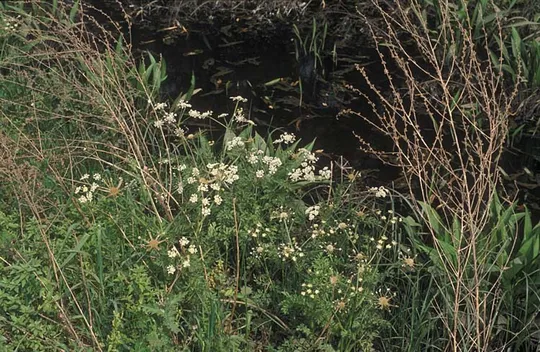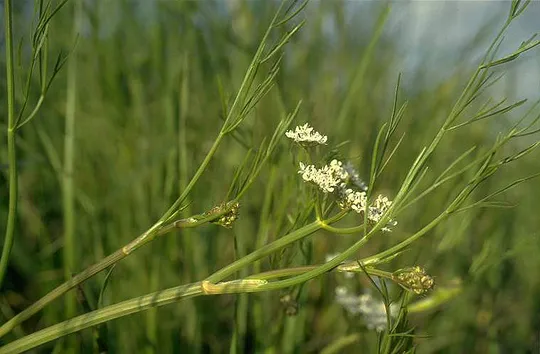Corky-fruited Water-dropwort, Burnet Dropwort
Oenanthe pimpinelloides
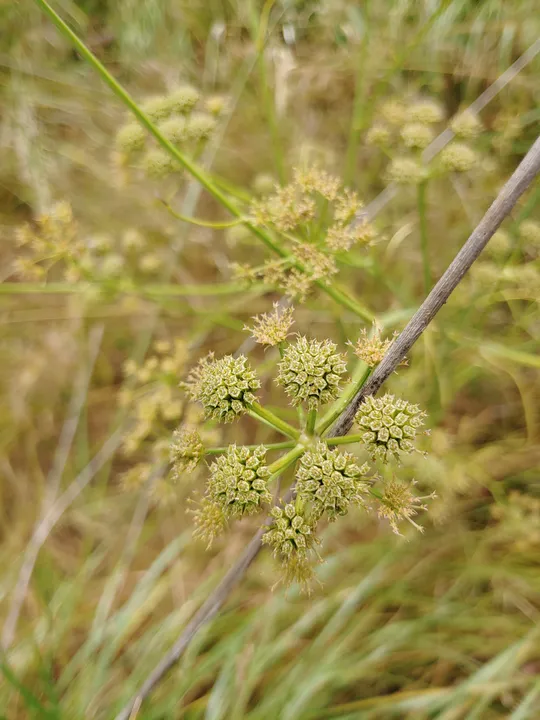
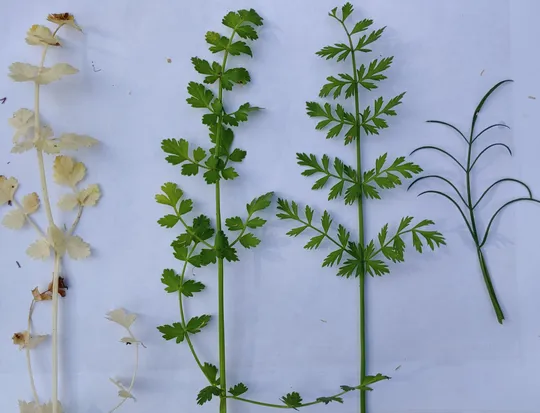
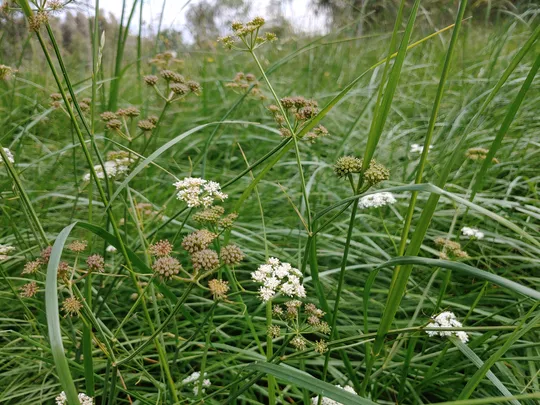
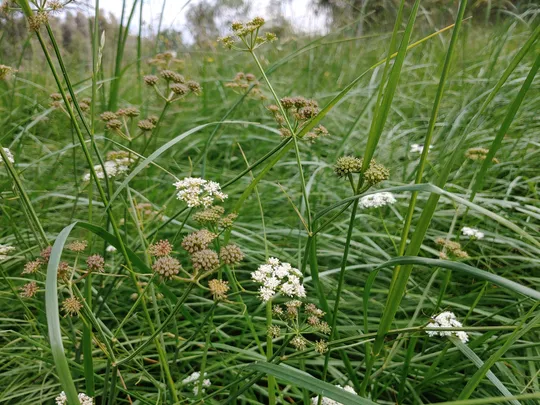
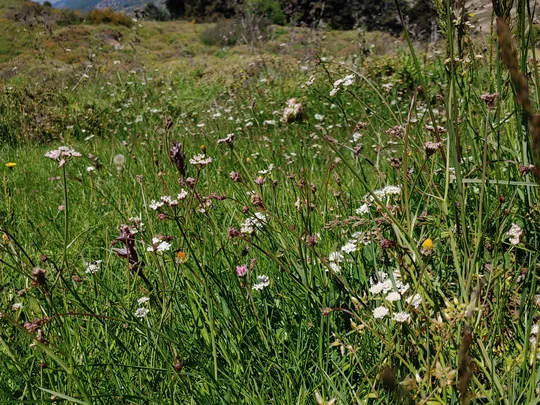
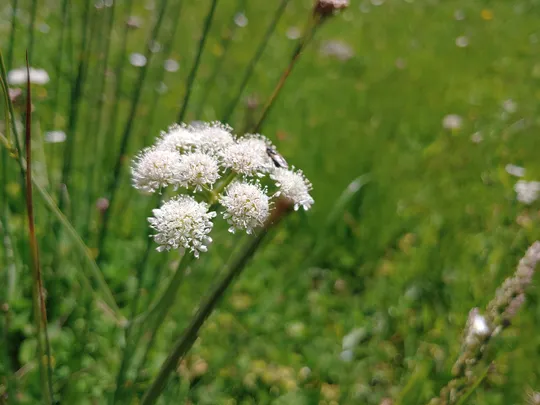
Oenanthe pimpinelloides once grew in the Sharon and now grows only in the Golan
and at the foot of Mount Hermon: in the Sharon it was collected during
1927-1940 in the Hadera Forest (then a marsh), the Taninim Stream (Berliner, 1977)
and near Gan Shmu'el (=Batih Pond?). Despite our
efforts we could not locate it during the rare plant species survey conducted
in the area in 1994. In the Golan it was collected at three sites: in 1994 in Mesil Asnia at an altitude of 910 m, in 1995 in Revaya near the
Daliot Junction at an altitude of 650 meters and in Ahu Nov (2005). It was
collected at the foot of Mount Hermon on Mount Keta in 1985 and in En Yazur in
the Yafori Valley (now an apple orchard) in 1973.
Marshes, seasonal pools and seasonal sills; heavy soils flooded
in winter.
The genus Oenanthe has 40 species found
in the temperate regions of the Old World. Most of the species are herbaceous perennial
plants whose habitat is wetlands. Seven species of Oenanthe grow in the
Middle East, of which four can be found in Israel. They are all wetland
species that grow in Israel's Mediterranean region. All the Oenanthe species in
Israel have hollow stems. The easiest species to identify is O. prolifera,
which has a sessile central umbellule adorned with stiff rays. O. silaifolia
is common in the shallow streambeds of the Golan Heights and the Yafuri Valley,
and is almost extinct in western Israel. Only O. fistulosa
has a spherical capitulum-like inflorescence. In the other species
– O. silaifolia and O. prolifera
– the inflorescence of the umbellule is flat.
O. pimpinelloides is very close
to O. silaifolia.
The two species grow in the Golan in the same habitat and on the same sites,
but they are generally accepted in the literature as two separate independent
species. Three signs distinguish between them: in O. silaifolia
the root nodules emerge very close to the root collar, the umbellule bracteoles
fit closely to the stem (not bent backwards like in O. pimpinelloides)
and the leaves lobes are linear.
·
Oenanthe pimpinelloides remains on only two sites in the Golan Heights and another one
at the foot of Mount Hermon. The species is extinct from three sites in the
coastal plain where it was found the past. At the foot of Mount Hermon it is also
threatened by rapid agricultural development. Only the two known sites in the
Golan are relatively preserved, one of them in the Mesil Asnia Nature Reserve (proposed
reserve).
·
No
rare species survey was conducted in the Golan and there is no information regarding
population sizes there.
A thorough field survey, focusing on the Golan, should
be conducted to map the distribution of all four Oenanthe
species. The survey should be complemented by systematic research on the Oenanthe
species in Israel, particularly the proximity between O.
pimpinelloides and O. silaifolia;
their habitats should be studied as well. Two plots should be demarcated in the
northern (Yafori Valley, Mount Keta) and in the central (Mesil Asnia, Enot Peham) Golan, and they should be monitored
and the taxonomy and demographics of the Oenanthe species growing in Israel
should be studied.
Oenanthe pimpinelloides
is widely distributed across most of Europe and the North Mediterranean
countries: from Spain to the Balkans and further east into the Black Sea
countries and the Caucasus. It is absent in the Maghreb countries. In the
Middle East the species is found in most of the regions of Turkey, in the
western part of the Mediterranean region in Syria-Lebanon, in northern Jordan
and in Israel.
Oenanthe
pimpinelloides is a perennial northern plant of seasonal wetlands. Israel
is the southern limit of its global distribution. The plant became extinct on
the coastal plain following the degradation of the wetlands in the region. It survived
only in the Golan and at a single site at the foot of Mount Hermon.
Current Occupancy Map
| 1000 squre meter pixel | 5000 squre meter pixel | 10000 squre meter pixel | |
|---|---|---|---|
| number of observations | 0 | 0 | 0 |
| in total pixels | 0 | 0 | 0 |
| Family | Apiaceae |
| Classification | On the endangered species list |
| Ecosystem | Bodies of Water |
| Chorotype | Southern Euro – Siberian, Mediterranean |
| Conservation Site | Mesil Asnia in Northern Golan |
| Rarity |
1
4
6
|
|---|---|
| Vulnerability |
0
4
4
|
| Attractiveness |
0
0
4
|
| Endemism |
0
0
4
|
| Red number |
1
4.7
10
|
| Peripherality | N |
| IUCN category | DD EW EX LC CR EN VU NT |
| Threat Definition according to the red book | Endangered |
 Based on:
Based on:

